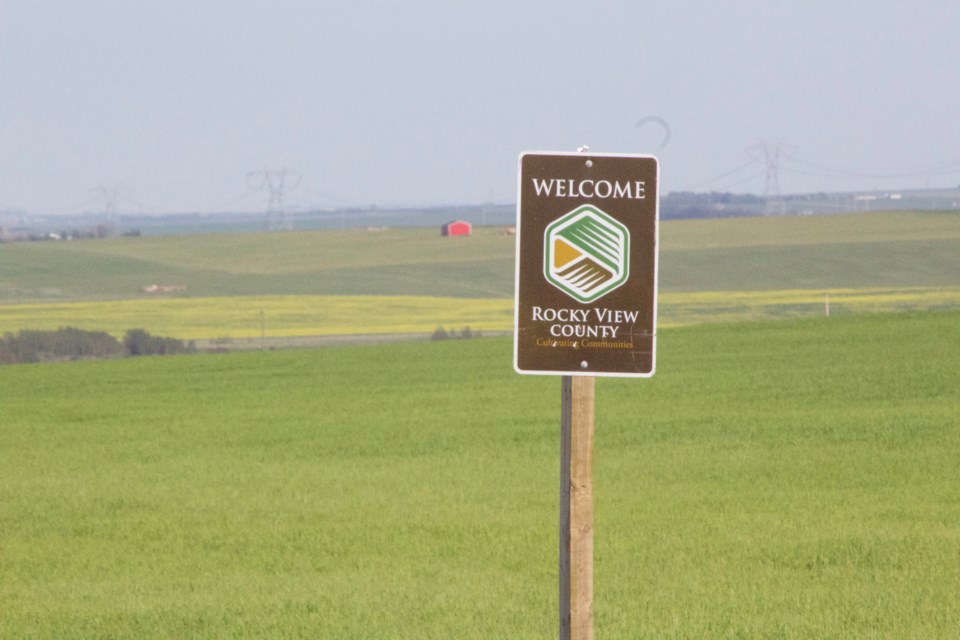A new regional growth plan has been approved for Calgary and its surrounding communities, despite opposition from three rural municipalities, including Rocky View County (RVC).
RVC formalized its opposition to the Calgary Metropolitan Region Board’s (CMRB) regional growth plan, servicing plan, and regional evaluation framework, voting against the documents on May 21.
RVC joined the CMRB’s other two rural municipality members – Foothills County and Wheatland County – in voting against the growth plan at the CMRB’s most recent board meeting. Representatives from the board’s seven other municipality members, including Calgary, Airdrie, Cochrane, Okotoks, Chestermere, High River and Strathmore, voted in favour.
Reeve Daniel Henn, who is RVC council’s representative on the CMRB, said the board’s plans are too “urban-focused,” which is why the rural municipalities voted against it.
“For the rural municipalities, it limits any kind of growth outside of joint planning areas or the growth hamlets,” he said after the meeting.
According to its website, the CMRB's mandate is to support long-term sustainability in the Calgary Metropolitan Region (CMR), with a focus on environmentally responsible land-use planning, growth management and efficient land-use. The plan is built around the expectation the CMR will see an influx of one million residents and 600,000 jobs in the next 40 or 50 years.
The CMRB also aims to develop policies regarding the coordination of regional infrastructure investment and service delivery, according to its website. The key features of the draft plan include preferred place-types and growth areas. The draft plan states new development will “only happen in prescribed areas rather than an ad hoc way, with the exception of local employment areas and small subdivisions.”
However, the CMRB’s three rural municipality members have repeatedly voiced opposition to the growth plan in the last year, citing concerns about a loss of rural autonomy regarding economic development.
“The rural municipalities are growth areas by definition,” Henn said. “Other than a few adjustments to increase densities that they’re asking for, there are no impacts to the urban municipalities. This growth plan doesn’t impact urban municipalities at all.”
In a staff report in RVC council’s May 18 meeting agenda, the County's administration expressed concern the growth plan would restrict future development to joint planning areas and growth hamlets.
“Overall, it is an urban-focused plan that constrains independent decision-making of rural municipalities,” the report stated. “There are policies that will allow the County to bring forward other growth areas, but this will be subject to [CMRB] approval.”
RVC council was presented with a final report from CMRB and consulting firm HDR Calthorpe on May 18. The lead consultant on the project, Peter Calthorpe, outlined the regional growth plan’s most recent amendments.
“Mixed-use, mixed income and mixed population makes for a more efficient land-use in terms of overall blended density, less infrastructure and less automobile dependence,” he told council.
“That was a pattern to development that was already preferred in your region, and I think driven largely by market demand.”
But council still seemed critical of the plan. Following Calthorpe's presentation, Coun. Kim McKylor had many questions and brought up concerns, including how the plan addresses the region's “current economic reality.” She argued the plan creates “economic winners and losers.”
“You've got shifts in employers that have publicly stated they have no intention of re-populating their spaces in downtown Calgary,” she said. “You have shifts in major employers, primarily in the oil and gas sector, who will do a hybrid coming out of COVID, so they'll have work-from-home and office space. COVID over the last 15 months has proven that how and where we commute have shifted.
“The build-out of this plan... has been focused on getting people to an economic hub like the city of Calgary's downtown. I don't think this plan addresses that shift at all and it ignores that shift.”
South of Calgary, Foothills County Reeve Suzanne Oel has outlined concerns the regional growth plan will stifle residential, commercial and industrial growth opportunities for rural municipalities. She claimed it could limit the expansion and diversification of Foothills County’s tax base to offset residential taxes.
“This growth plan, the effect on us, rolls out in the form of huge red tape imposed on Foothills County with costly, lengthy processes that must be approved by the CMRB,” said Oel during the County’s May 18 meeting.
“It’s about control and holding the rurals as a land bank.”
With the vote passing 7-3, the regional growth plan was submitted to the Minister of Municipal Affairs for approval on June 1.
With files from Krista Conrad/Okotoks Western Wheel



